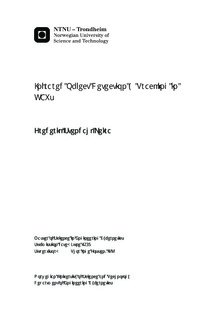Infrared Object Detection & Tracking in UAVs
Master thesis
Permanent lenke
http://hdl.handle.net/11250/260918Utgivelsesdato
2013Metadata
Vis full innførselSamlinger
Sammendrag
The present thesis describes the design and implementation of a small, light weight and power efficient payload system for the use in unmanned aerial vehicles (UAVs). The primary application of the payload system is that of performing real-time object detection and tracking based on an infrared camera. The implemented object detection algorithm utilizes pre-trained classifiers to perform detection, and the implemented object tracking algorithm is based on an estimate-and-measure tracking approach. The estimator used is a standard Kalman filter, which assumes a linear motion model for the tracked objects. A global nearest neighbor approach was used to match the measurements to the tracked objects. Two types of classifiers were trained. The first classifier was trained with a support vector machine in combination with the histogram of oriented gradients feature representation. The second classifier was created by constructing a boosted cascade of classifiers trained using the AdaBoost algorithm by means of a set of Haar-like features. Furthermore, experiments are presented which demonstrate that the system is able to consistently track humans in many simulated real-time scenarios. However, it was found that in the presence of abrupt and relatively large object displacements, the linear motion model was not sufficiently accurate to keep track of the object. This implies that the tracking algorithm can benefit from the implementation of a non-linear estimator. Finally, the payload was found to be able to perform simulated real-time tracking, while at the same time performing several additional tasks. This includes sending important data to a control station located on the ground, and also simulating control over the UAV.
